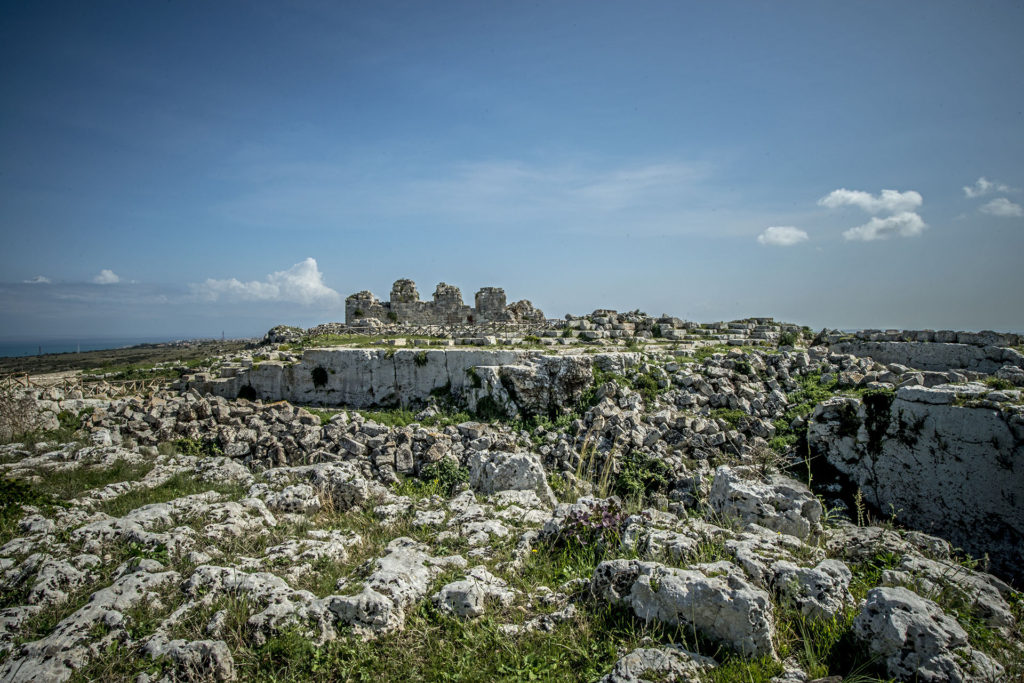The Euryalus Fortress crowned the grandiose defensive system erected by Dionysius I between 402 and 397 BC. The fortress, which occupied around 15,000 square metres, was equipped with a system of three moats that barred access to the castle.
Consisting of a trapezium-shaped keep protected by five towers, the construction had several strategic elements that were intended to take any attackers by surprise. The only access point (called the Tryolon because it consisted of three gates) was hidden by ingenious architecture that prevented it from being seen.
The castle was traversed by a series of tunnels and
underground trenches
, which allowed soldiers to move quickly from one side of the fortress to the other without being seen.
 The watchtower was also the nucleus of the defensive system, since it served as a storehouse for weapons and supplies and as a link to every point of the fortress.
The watchtower was also the nucleus of the defensive system, since it served as a storehouse for weapons and supplies and as a link to every point of the fortress.
Inside the defensive complex, there were also some service areas for soldiers and infantry, such as kitchens, lodgings and warehouses.
In the middle of a large courtyard there were two tanks for water supply in case of siege. The five square towers, at least 15 metres high and crowned by crenellations and lionheaded drainpipes, were probably used as a platform for
catapults
.
In this period the city of Syracuse was a gigantic workshop: the artisans tried their hand at inventing and experimenting with new war machines, encouraged by the tyrant Dionysius who offered rewards and riches for the best.